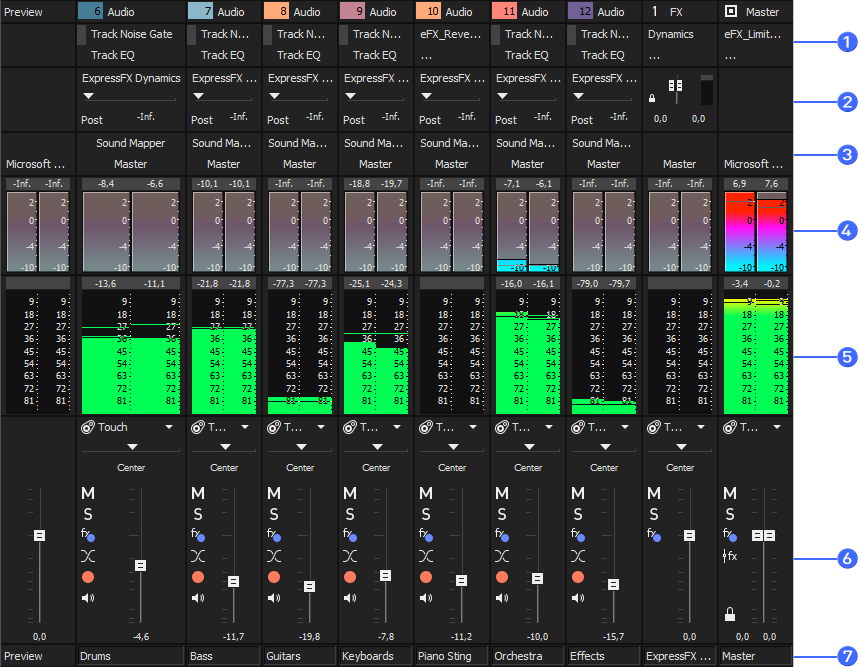Channel Strips
Audio tracks, busses, input busses, and assignable effects chains are displayed as channel strips in the Mixing Console.
When a control surface is enabled, an indicator is displayed in the Mixing Console to indicate which channels are under external control. Multiple bars are displayed if a channel is under the control of multiple devices.

FIGURE Mixing Console window
| Region | Description |
|---|---|
| 1 Insert FX Control Region |
The Insert FX control region displays the insert effects chain for a track or bus. |
| 2 Sends Control Region |
The Sends control region displays controls for routing tracks to busses or assignable effects chains. For assignable effects chains, the Send Region also displays an input fader and meter. |
| 3 I/O Control Region |
The I/O control region allows you to choose the recording input for a track or route a channel to a bus or hardware output. |
| 4 VU Meters Control Region |
The VU Meters control region displays volume unit (VU) and peak program (PPM) meters to help you determine the perceived loudness of your audio signal (peak program meters provide faster response times to volume increases than VU meters). TIP To change the range of all VU meters in the Mixing Console, right-click a meter and choose a range from the shortcut menu. |
| 5 Meters Control Region |
The Meters control region displays peak meters you can use to monitor instantaneous levels during playback and determine the loudest level in your audio signal. If the Meters control region is not visible, the Fader control region also displays a peak meter. TIP To change the range of all meters in the Mixing Console, right-click a meter and choose a range from the shortcut menu. |
| 6 Faders Control Region |
The Faders control region allows you to control a channel's gain.
|
| 7 Channel Label |
The Channel Label displays the name of the track or bus. Double-click to edit the name. |
-
If you want to change the order in which channel strips are displayed, you can click the channel label and drag a channel strip to a new location.
-
Hover over a fader and roll your mouse wheel to change its setting.
-
To edit a fader value quickly, you can double-click the displayed value to type a new value.
-
Hold Ctrl while dragging a fader to move it in fine increments.